The number-one song in the U.S. the day Ilya Kovalchuk’s time with the Atlanta Thrashers ran out was, ironically, Ke$ha’s “Tik Tok.”
It’s been more than eight years since the Thrashers sent Kovalchuk and Ansi Salmela to the New Jersey Devils in exchange for Niclas Bergfors, Johnny Oduya, Patrice Cormier, and a 2010 first-round draft pick. The teams also swapped second-round picks.
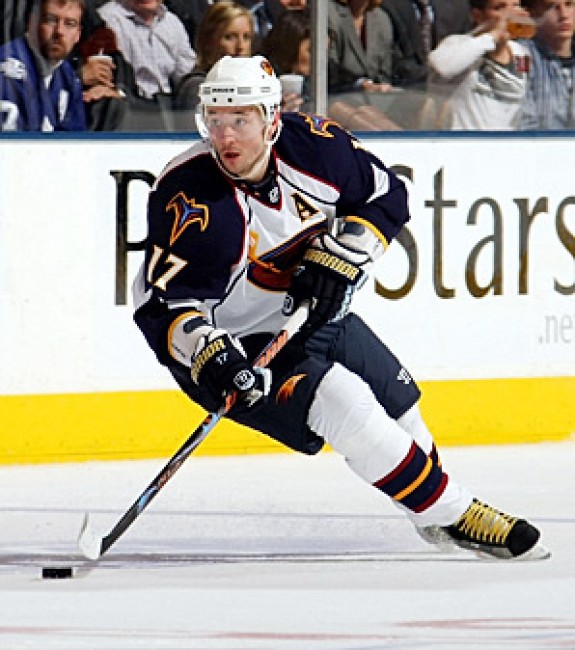
It seems even longer given how much has happened in the NHL since the trade — there’s been a lengthy lockout, the introduction of a bevy of video-review rules, and the addition of an expansion franchise that almost won the Stanley Cup in its inaugural season, among many other notable events. The Thrashers haven’t existed for seven years now, relocating to Winnipeg in 2011 to become the second incarnation of the Jets.
Short-Term Impact of the Kovalchuk Trade
It’s not tough to see who benefitted more from the trade from the get-go. In Kovalchuk, the Devils got arguably the league’s most dangerous pure goal scorer. At just 26 years old, the 2001 first overall pick already had two 50-goal seasons, another three 40-goal seasons, and 615 points in only 594 career games.
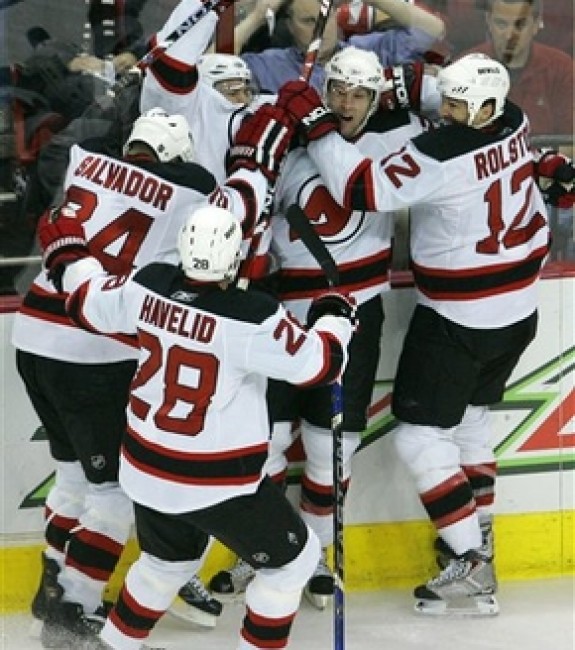
He brought a major offensive boost to the Devils, putting up 27 points in 27 games down the stretch and helping them win the Atlantic Divison. However, the team underperformed in the playoffs, falling 4-1 in the first round to the Philadelphia Flyers.
The Thrashers, on the other hand, in Oduya, Bergfors, and Cormier, didn’t receive anyone high-calibre who could contribute as significantly to a playoff push as Kovalchuk. The Thrashers held a 24-23-8 record at the time of the trade and were still in the hunt for a postseason berth.
However, contract negotiations between Kovalchuk and Thrashers general manager Don Waddell had reached an impasse, with the Russian sniper turning down a 12-year, $101-million contract offer from the club. Waddell didn’t want to risk holding onto Kovalchuk for a few more months but then losing him for nothing to free agency.
The Thrashers ended up second in a weak Southeast Division but missed the playoffs by five points.
Kovalchuk’s Contract Controversy
If the Devils had won the Stanley Cup in 2010, it’s possible general manager Lou Lamoriello wouldn’t have felt the need to re-up Kovalchuk. He didn’t enter into any contract negotiations with Kovalchuk in the latter part of the season, perhaps waiting to see if he could get a fourth championship ring without shelling out a fat new contract. However, given their first-round exit, Lamiorello, viewing his team as a legitimate contender only made better with Kovalchuk’s scads of offensive skill, entered negotiations.
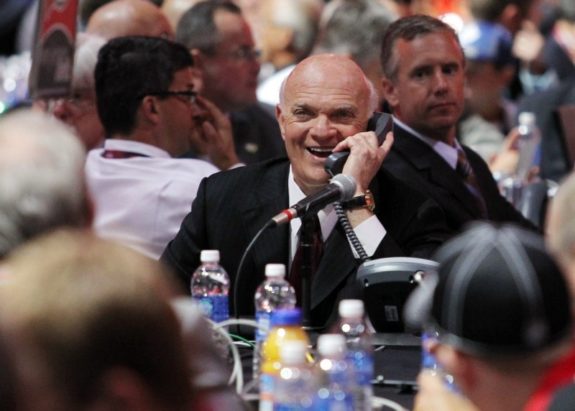
He gave Kovalchuk the longest contract in NHL history, a 17-year, $102-million behemoth. However, the NHL quashed the deal, accusing Lamiorello of trying to circumvent the NHL salary cap — the contract was absurdly front-loaded and would pay Kovalchuk only $550,000 each of its last five years.
Lamiorello and Kovalchuk went back to the drawing board and in September, agreed to a 15-year, $100-million deal, which the league accepted, ending the saga.
Here for a Good Time, Not a Long Time
Kovalchuk would end up fulfilling just one-fifth of his contract.
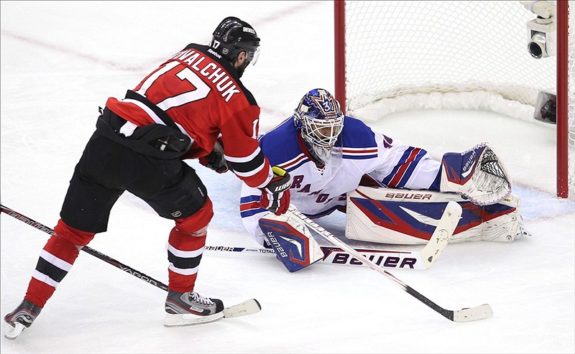
In 2010-11, the Devils finished under .500 and didn’t qualify for the playoffs, and Kovalchuk had a down year. His 60 points were his lowest total since his 2001-02 rookie campaign.
In 2011-2012, though, Kovalchuk and the Devils had a resurgence. He put up 83 points in the regular season and was a key contributor to the team’s run to the Stanley Cup Final, putting up 19 more. The Devils ultimately lost 4-2 to the Los Angeles Kings.
In the 2012-13 season, which didn’t begin on time due to the lockout, Kovalchuk signed with SKA Saint Petersburg of the Kontinental Hockey League. When the lockout ended, he didn’t immediately return to North America — foreshadowing things to come — but eventually came back to his NHL club and put up 31 points in 37 games.
Overall, in his three seasons in New Jersey afer signing his new contract, Kovalchuk played in 195 regular-season games, putting up 79 goals and 174 points.
To Russia, Without Love (for New Jersey)
In the summer of 2013, Kovalchuk elected to retire from the NHL with 12 years still left on his deal with the Devils. He decided to return to Russia, signing a four-year contract with SKA Saint Petersburg. The only saving grace for the Devils was that his retirement nullified their obligation to pay him out the $77 million remaining on his contract.
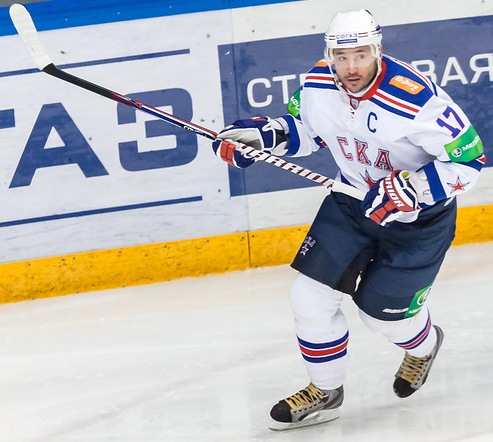
Kovalchuk has played for the club for the past five seasons and has been very successful. He’s put up 258 points in 262 games and hoisted two Gagarin Cups.
Kovalchuk teased a possible return in the fall of 2016, but the then-34-year-old ultimately decided to stay in the KHL, likely so he could represent his country in the PyeongChang 2018 Olympic Winter Games.
Ilya Kovalchuk to @khl on possible comeback to the #NHL next season: 'Why not? Anything can happen'
— Igor Eronko (@IgorEronko) November 9, 2016
He’s again hinted at his desire to return to the NHL in the last month. Darren Dreger reported Kovalchuk’s agent, J.P. Barry, has been in contact with at least eight teams. Kovalchuk can’t sign with any team until free-agent frenzy on July 1, though.
“I have three or four years left in my tank where I can compete at the highest level…that’s why I’m here and that’s why I want to sign in the NHL,” Kovalchuk said on June 1.
Unfortunately for the Devils, Kovalchuk turned 35 on Apr. 15, which means they no longer retain his rights. He is free to sign with any team he wants.
It doesn’t appear a return to the team he walked out on is in the cards anyway. Devils GM Ray Shero said he has not been in contact with the once-wayward forward. It seems to be a “fool me once, shame on you. Fool me twice, shame on me” type of scenario.
Thrashers Didn’t Hit the Jackpot
Even though Don Waddell put on a positive face about the players he received in exchange for Kovalchuk, none of them ended up leaving much of a positive impression on the franchise.
Niclas Bergfors, a New Jersey 2005 first-round pick who had shown some scoring ability for the Lowell Devils, was perhaps the player with the most potential. However, he didn’t pan out. In 2010-11, he put up 29 points for the Thrashers in 52 games before they traded him to the Florida Panthers. By 2011-12, he was playing in the KHL and now plays in the DEL.
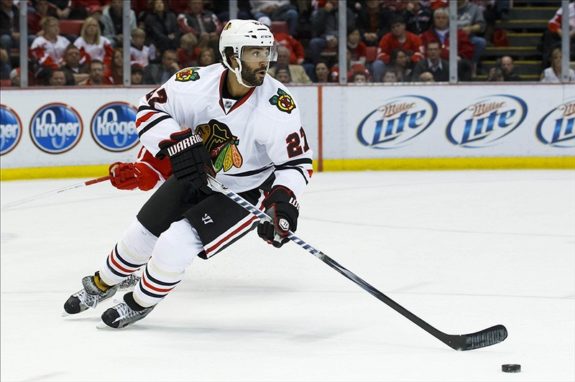
Johnny Oduya was similarly disappointing. Waddell called him a “top-four” defenseman upon his arrival in Atlanta, which almost everyone who’d ever watched the Swedish blueliner play knew was a hilariously off-base classification. Oduya played all 82 games for the Thrashers in their final season and 63 games for the Jets in their inaugural year.
With the Jets, Oduya was derided for giving up too many “free pizzas” — easy-to-intercept cross-ice passes — and for being soft on the puck. General manager Kevin Cheveldayoff ended up trading him to the Chicago Blackhawks for a couple of picks at the trade deadline. Oduya went on to capture a pair of Stanley Cups with the Blackhawks in 2013 and 2015, and at 36 years old, is still drawing an NHL paycheque.
The lone player remaining with either organization is Patrice Cormier. Cormier was a marked man at the time of the trade — he was serving a season-long suspension for an ugly elbow he delivered to the head of Mikael Tam while playing for the Quebec Major Junior Hockey League’s Rouyn-Noranda Huskies.
Cormier has played in 52 NHL contests, but his bad reputation from the incident and other on-ice shenanigans derailed his career. Now 27 years old, he’s cleaned up his act but is a career minor-leaguer. For the past three years, he’s played for the Manitoba Moose. For the past two, he’s signed AHL deals and been their captain.
And the Winner Is…The Winnipeg Jets?
Within three years, the trade had basically unraveled, but that doesn’t mean it was meaningless. It caused ripple effects that are still being felt. The trade paved the way for a number of developments that benefitted — and continue to benefit — the Jets.
Because the Thrashers didn’t spend on Kovalchuk, they were able to get Andrew Ladd and Dustin Byfuglien from the Blackhawks, a team feeling the cap crunch fresh off winning the Stanley Cup. It was a rare good move by Waddell, who was never able to build a contender or amass any depth.
Ladd acted as the captain for the Jets and produced solid numbers for five seasons. The Jets derived even more benefits from trading him back to the Blackhawks in 2016. Much of what the Jets have been able to do in the past two years — and much of what they’ll need to do in the future — would not have been possible without trading Ladd.
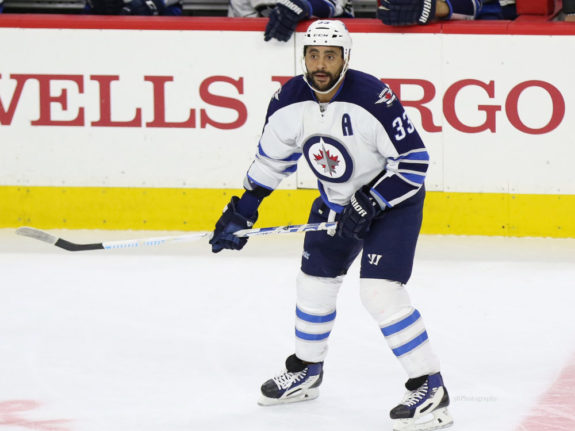
There’s no other player with Byfuglien’s skill set in the NHL. He can change the momentum of a game in a myriad of ways, whether that’s by bashing opponents with his massive frame or by blasting in a sizzling slapper from the point. He was a beast in the 2018 playoffs and is the heart and soul of the Jets.
Neither Ladd nor Byfuglien would have played for the Jets without the Kovalchuk trade.
Overall, the Trade Didn’t Have a Long-Term Impact
Nothing exists in a vacuum. While it’s always interesting to look at a big trade in retrospect with 20/20 lenses and determine who came out on top, all the external factors that caused the Thrashers and Devils to swing the trade cannot be ignored.
For such a high-profile trade — possibly the biggest of a busy winter — and all the controversy that swirled around Kovalchuk and his contract in the summer that followed, the players moved in the deal didn’t end up having much direct long-term impact on either franchise. However, it paved the way for other significant developments, the ripple effects of which are still being felt today.